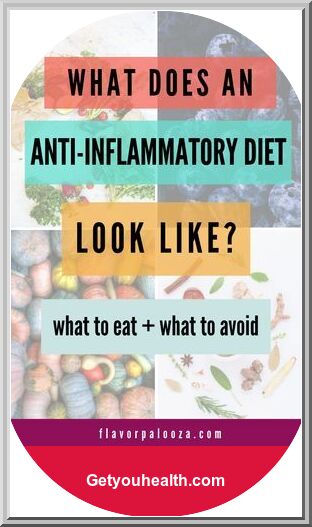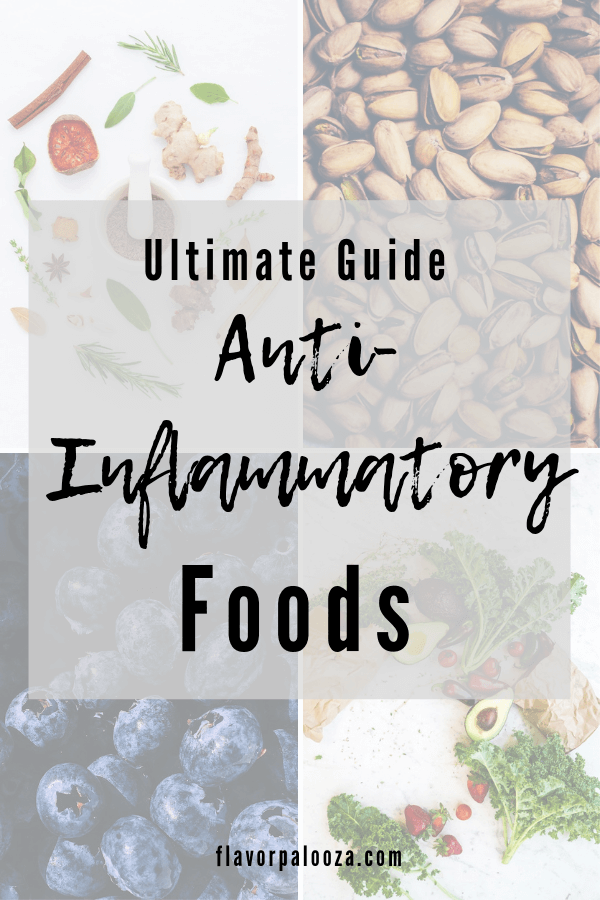What is an Anti-Inflammatory Diet plan?
Thing’s very first: You may be asking yourself what precisely an anti-inflammatory diet plan is. Perhaps your medical professional suggested you prevent foods that trigger inflammation. Perhaps you required to Google with a list of symptoms and chose to give an anti-inflammatory diet plan a shot, to see if your signs clear up.
Fortunately is an anti-inflammatory diet plan isn’t truly all that restrictive, as you’ll see in the anti-inflammatory foods lists listed below.
Essentially, an anti-inflammatory diet plan is about eating more real, whole foods and less processed foods, with the goal of lowering swelling in the body.
Persistent inflammation is linked to a host of conditions and illness, so an anti-inflammatory diet plan is really a total, excellent diet for a lot of individuals to think about, because at its core it’s a healthy, entire foods-oriented diet, with a basic, well balanced focus of eat more great than bad.
In many methods, it’s really comparable to the popular Mediterranean diet plan.
So, what can I eat and what foods should I avoid on an anti-inflammatory diet plan?
Foods That Cause Swelling
Omega-6 fats are known to increase swelling in the body. They’re also essential for your body, so you shouldn’t cut them out completely. Rather, it is essential to keep your omega-6 and omega-3 fat consumption in balance to much better manage possible swelling.
Foods high in omega-6 fats consist of:
- Meat
- Dairy products (like cheese, butter, and milk).
- Veggie oils (like corn and safflower).
Once again, it’s not about avoiding foods entirely, it’s more about knowing what you’re eating, and sticking more to the 80/20 rule– more good than bad– and keeping a well balanced diet plan.
Other foods to limit include
- sugar.
- fine-tuned grains (like white bread).
- sweet beverages.
- fine-tuned carbohydrates.
- desserts.
- processed snack foods.
- alcohol.
Now, here’s a list of what you ought to be.mainly consuming on an anti-inflammatory diet..
- Veggies and fruits.
- Entire grains.
- Fermented foods.
- Seafood, Tofu & & Tempeh.
- Bone broth.
- Vegetables and beans.
- Good fats.
- Spices and herbs.
Note: If you do not have time to make your own bone broth, get some. Kettle & & Fire Bone Broth. !

Anti-Inflammatory Veggies.
Some of the very best vegetables for combating swelling are tomatoes and green leafy vegetables, like spinach and kale. Below, discover a fast, graphic list of more anti-inflammatory veggies!
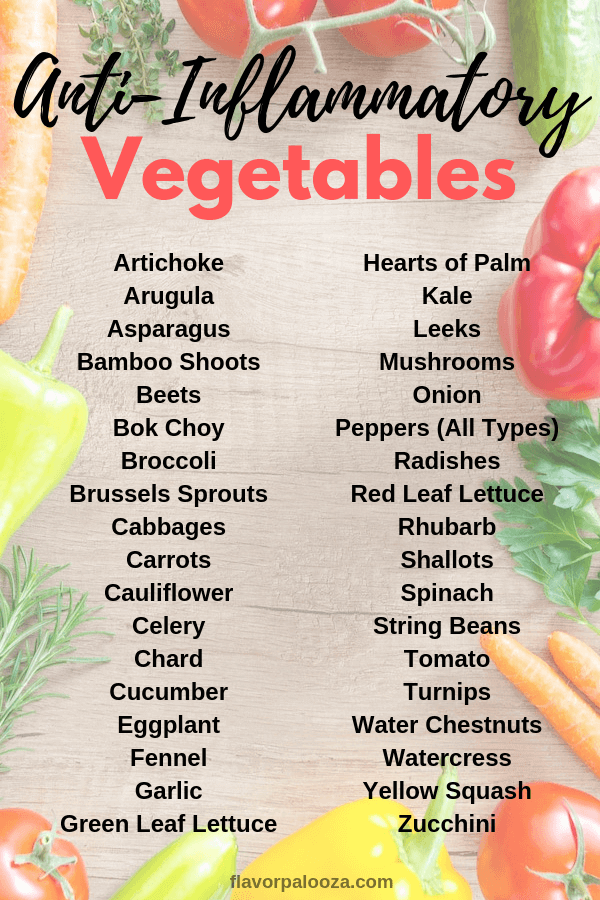
Anti-Inflammatory Fruits.
The big winners in the anti-inflammatory fruit category are strawberries, cherries, blueberries and oranges. There are many more healthful fruits you can delight in on an anti-inflammatory diet.
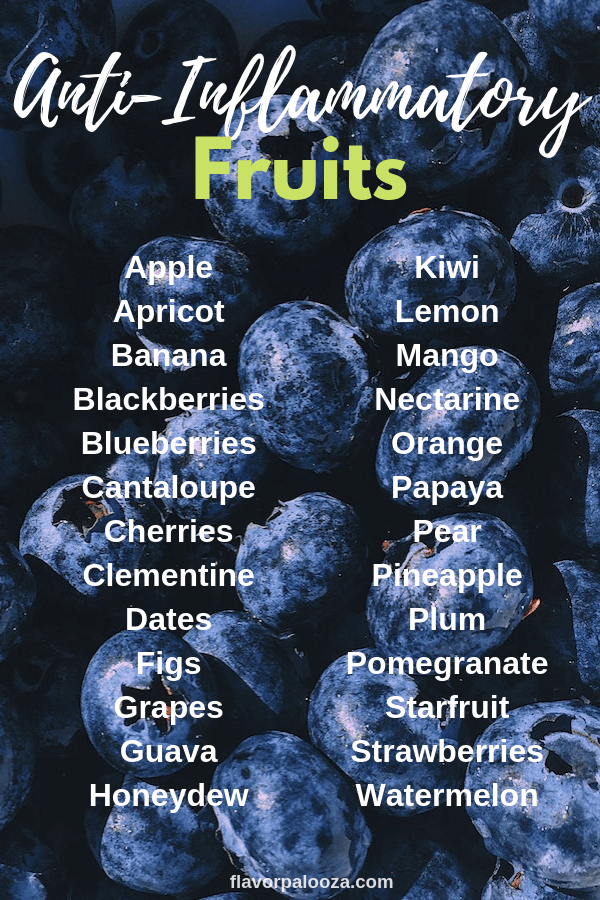
Anti-Inflammatory Grains.
Whole and broke grains like brown rice, wild rice, buckwheat, steel-cut, barley, and quinoa oats are exceptional anti-inflammatory options.
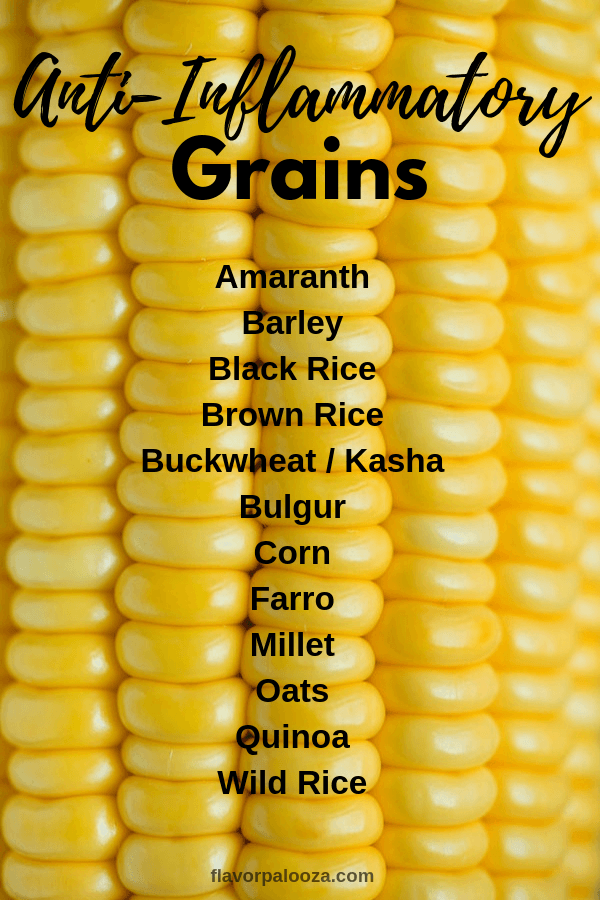
Anti-Inflammatory Starchy Vegetables.
These starchy veggies are high in fiber, naturally gluten high and totally free in vital vitamins and minerals. They’re excellent additions to an anti-inflammatory diet plan, and are great carb replacements for pastas and breads.
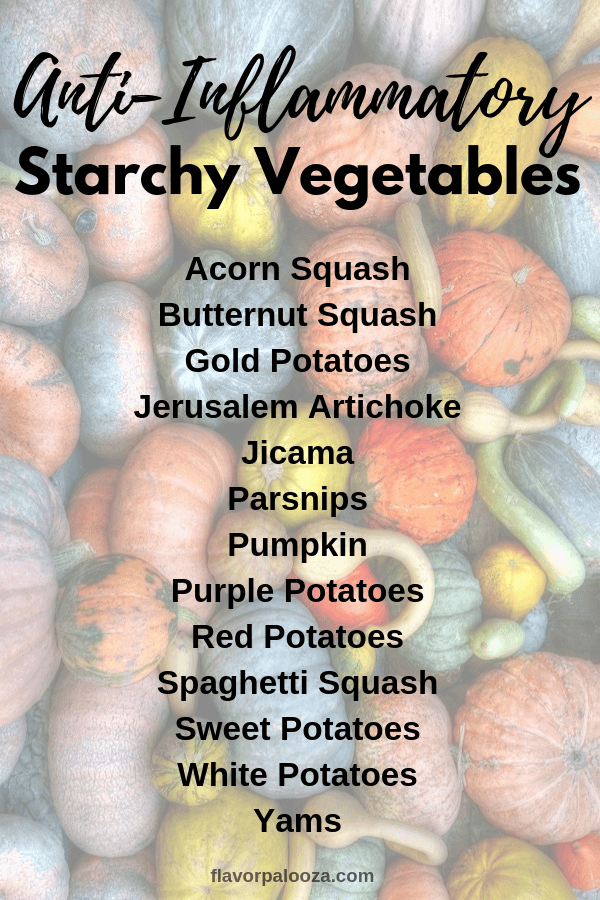
Anti-Inflammatory Beans & & Legumes.
Beans and legumes are low-glycemic-index foods that provide a lot of fiber and protein. Add a number of servings each day to your anti-inflammatory diet plan.
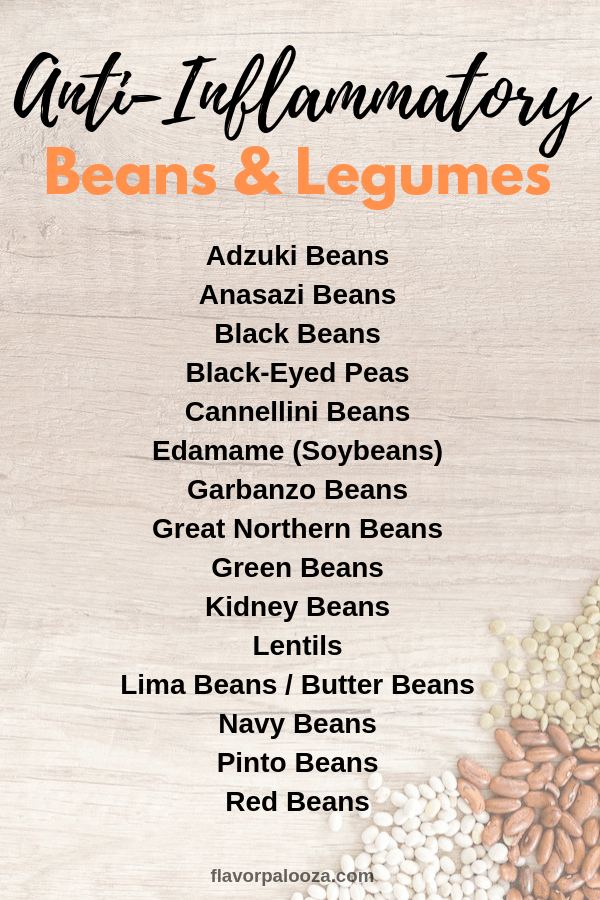
Anti-Inflammatory Proteins: Vegetarian + Seafood.
Fatty fish like salmon, tuna, mackerel and sardines are some of the top choices in the anti-inflammatory protein category. Other proteins choices consist of omega-3 enriched eggs, natural cheeses, yogurt and lean meats, like skinless poultry. Plus, there are some vegetarian/vegan choices listed below.
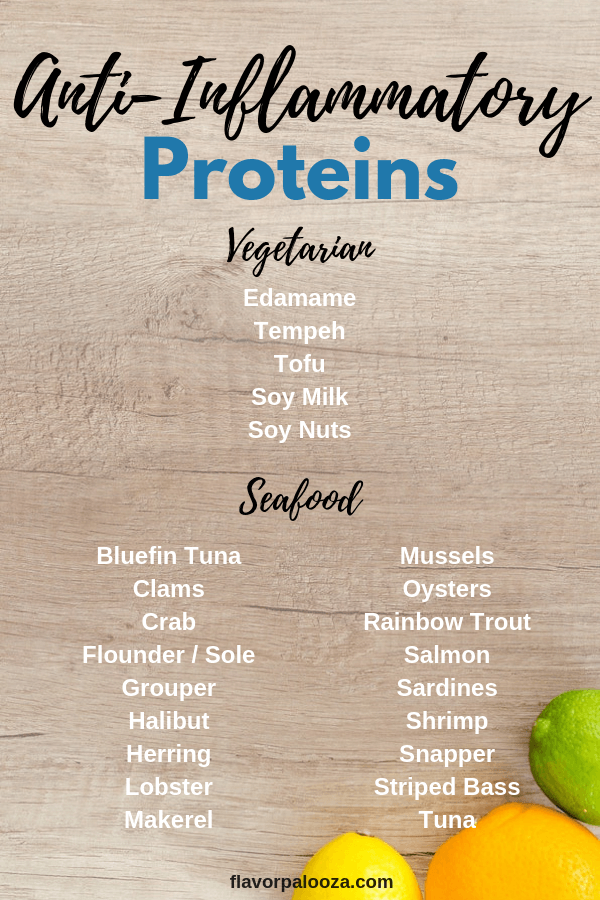
Anti-Inflammatory Fats & & Oils.
You should be getting 5 to 7 portions of healthy fats from the list below daily. Some leading choices are olive oil, almonds, walnuts, hemp seeds and flaxseeds. Keep in mind that a few of the foods listed below been available in oils and butters, so additional items to include to your anti-inflammatory shopping cart include
- Almond Butter.
- Almond Oil.
- Avocado Oil.
- Cashew Butter.
- Flax Seed Oil.
- Hemp Seed Oil.
- Peanut Butter.
- Peanut Oil.
- Sesame Seed Oil.
- Sunflower Seed Butter.
- Olive Oil.
- Walnut Oil.
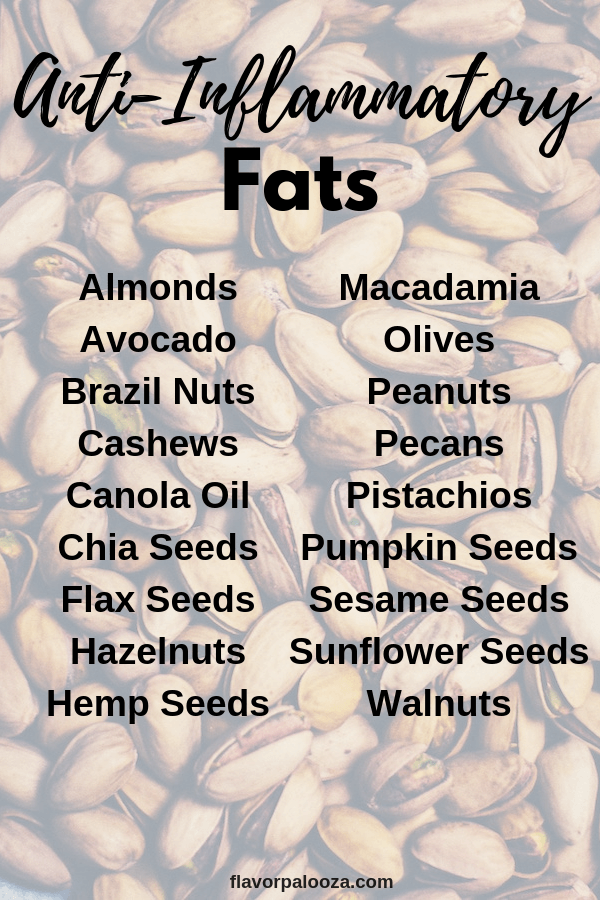
Anti-Inflammatory Herbs and Spices.
Instead of relying on sugar and salt for taste, up your spice consumption! Some of the very best options are garlic, ginger, turmeric and cinnamon. Enjoy in unlimited amounts!
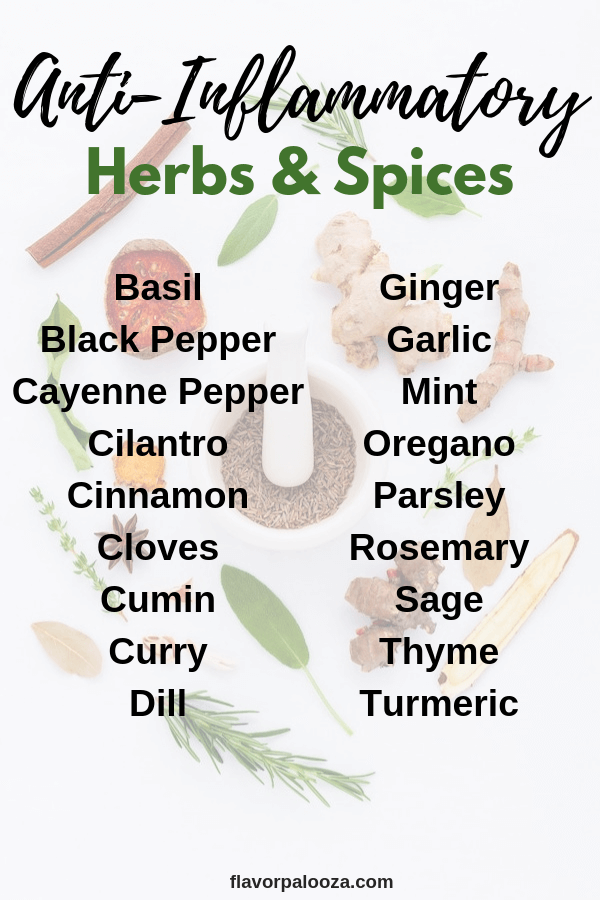
Anti-Inflammatory Sugary foods.
- 70% or greater dark chocolate (sparingly).
- Whole Fruits.
Anti-Inflammatory Beverages.
Hopefully you now have a much better sense of what an anti-inflammatory diet plan is.
Article source: https://flavorpalooza.com/your-complete-anti-inflammatory-foods-list/
